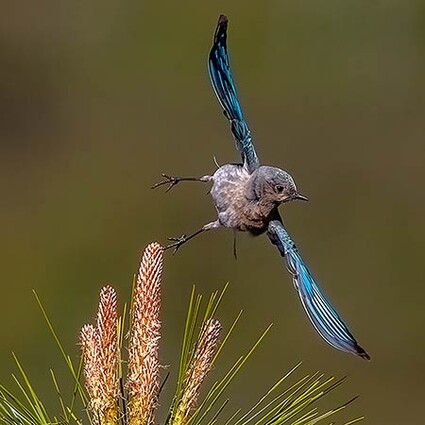Sisters Country birds
Last updated 11/30/2021 at Noon
The Mountain Bluebird [Sialia currucoides] seeks out open areas with a mix of grasses, shrubs and trees, in mountainous areas up to 12,500 feet. Clearcuts, meadows, and sagebrush/juniper habitat provide large insect populations for the feeding of fledglings. They require tree cavities or nest boxes for brooding.
The female chooses her mate by the quality of the nest cavity that the male offers. She builds the nest as the male Mountain Bluebird brings insects to her while she brings the grasses and stems to line the nest. A 13-day incubation period of four to eight pale blue eggs period commences in May and June, and they often have a second brood.
The young fledge in 17-22 days and will often remain as a family unit for the summer. Their bright azure blue feathers can be seen on fence posts and telephone lines as they catch insects in the air, often hovering before dropping down to the ground. Berries from wild currant, elderberry, sumac, and mistletoe are a portion of their diet in the fall. Average lifespan is four to six years. They migrate south in September and early October.
They are in the thrush family and in groups are referred to as a “mutation” or a “hermitage” of thrushes. For more Mountain Bluebird photos visit http://abirdsingsbecauseithasasong.com/recent-journeys.













Reader Comments(0)